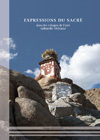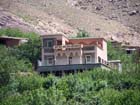Népal : les monuments sont au coeur de la vie de la cité
- Le 27/09/2015
- Dans Généralités
- 0 commentaire
Josiane continue de me transmettre des articles choisis sur les médias népalais. Dans le prolongement du précédent billet de blog, on aborde aujourd'hui en profondeur la notion de guthi qui ordonnance la vie quotidienne des Néwars, le groupe ethnique qui peuple en grande majorité la vallée de Katmandou. On comprendra mieux le pourquoi de la nécessité de reconstruire au plus vite les temples qui ne sont pas que des "ornements" ou des "monuments historiques à touristes".

Tangible and Intangible Heritages of Kathmandu
Posted: 25 Sep 2015 05:00 PM PDT on ecs.com.np
By Shreeansh Agrawal
Although the April 25th earthquake might have caused wide-spread damage to the tangible heritages of Nepal, the intangible heritages are still intact and thriving.
Much has been said about the destruction of cultural heritage sites brought on by the 2015 earthquake. Preservation efforts are underway and various bodies have been involved in restoring damaged structures. This aspect of our heritage - the tangible, palpable part - has been paid ample attention to but the intangible sense of culture attached to it has been an elusive topic in public debates and discussions. It is casually addressed as being at risk due to the destruction of its physical counterpart, but what exactly intangible heritage is, especially in the context of Kathmandu Valley, and what it means to try and preserve it, is a conversation that has not been given the light it deserves.
Yes, with the destruction of traditional sculpture and architecture, from well known public spaces like temples and Guthis to old, obscure Newari houses that have clung on to their land, comes the loss of the intangible heritage around it. The idea of small, nuclear families that give birth to the preference for narrow stairways, low roofs and small living spaces that is so characteristic of traditional Newari house, dies along with the house itself. Craftsmanship styles found in temples in Kathmandu Durbar Square that were razed to the ground, have been lost. Local knowledge surrounding these arts is gone. On a very superficial level, the reduction of the number of temples also means less public spaces where prayer practices can be carried out, further endangering the intangible aspects of Nepali culture.
However, all of these examples, particularly the last one, have been based on a universalised description of intangible heritage, the Convention for the Safeguarding of the Intangible Cultural Heritage 2003. It describes intangible cultural heritage as “practices, representations, expressions, knowledge, skills – as well as... artefacts and cultural spaces associated – that communities... recognise as part of their cultural heritage.” UNESCO declares that there are five aspects to intangible heritage: oral traditions, performing arts, social practices, knowledge and practices concerning the nature and the universe and traditional craftsmanship.
On the outset this definition gives us a clear idea of what intangible heritage is, and the fact that this is clearly demarcated away from tangible heritage, which constitutes “buildings and historic places, monuments, artifacts, etc., which are considered worthy of preservation for the future.” When we say offhandedly that the destruction of tangible heritage leads to the destruction of intangible heritage, we limit their relation to a one way causal link that ignores the fact that buildings and historic places are given as much relevance by the community around it (in this sense the carriers of intangible heritage) as intangible culture is given to by the buildings. We forget the possibility that tangible buildings are nothing more than media for our intangible set of values, traditions, mindsets and preferences for social organisation to express themselves.
At least from the local point of view, it is much more accurate to see the two as invariably mixed. Categorizing heritage is useful for administration of organisations that study and preserve heritage. It is easier to assign specialist heritage professionals to particular fields if there are categories to study. Archaeologists might focus more on tangible heritage and anthropologists on intangible. However, for us locals who interact with objects and ideas that are regarded as heritage as a part of our everyday lives, this division seems almost naive. A good example of these ideas are the public temples all around Kathmandu Valley, the product of interaction between four groups: the sculptor, the donor, the priest and the worshipper. Donors pay to have a sculpture made and a temple built for it. The sculptor then taps into knowledge from his intangible heritage and creates a sculpture. However, as of yet, the object is still nothing more than a statue. In many places, and particularly with Buddhist culture, life must be given to this statue for it to be an object of worship. Rituals are performed so that the statue ascends its material value. A social dynamic then emerges around these shrines, and a community is established that takes from the statue, but also gives it value.
These temples are the product of both intangible and intangible input. Yes, the temple and the statue are within the definition of tangible heritage, but they are meaningless if not for the spiritual prosaic life of Kathmandu dwellers. As everyday residents, we are able to ‘recognise [these temples] as a part of our cultural heritage’ because our knowledge system allows for stone sculptures of gods to be more than simple representations. We find nothing strange in the fact that deities reside on the side of the road in small, open shrines. For the individuals within the community tied by these gods, the statues are in fact deities who will grant well-being, health, wealth and prosperity to worshippers. And it is this casual belief that allows for the creation of sculptures and temples: a quotidian allegiance to a stone-god that is a part of our present knowledge system, our living intangible heritage. Our knowledge system and tradition are tied to their physical products.
It is also important here to emphasise that we are looking at heritage from the community’s point of view. As a part of a living, evolving culture, the community is much less concerned with preservation on the whole. The sense of history a building carries and the authenticity it has is very flexible in the local context. Many local legends may co-exist about a single monument, for example, and it would seem like a futile exercise to pin down when a shrine was made and by who, because it doesn’t concern the community. This also explains why there is little fixation on keeping the structure the way it was originally made. The Harishankar statue in Patan that preservationists covet for its artistic finesse and age has been rejected by the local community after it became damaged after the earthquake, based on the simple fact that broken statues cannot be worshipped. The temple of the Krishna shrine in Patan Durbar Square was removed due to its structural instability but people continue to pray to the shrine, giving the shrine a temporary shelter. A new temple will be built, and it is not all that important that old woodwork has been lost.
This kind of approach signifies that the loss of monuments or buildings will not endanger most aspects of intangible heritage : oral traditions, celebrations and rituals or knowledge systems. Memories and social practices that had mushroomed near monuments and buildings that have been destroyed, can be reinstalled. This applies to all preservation work of religious structures, yes, but also to non-religious buildings. Dharara is a good example. Built by Bhimsen Thapa in commemoration of Lalita Tripurasundari, the tower is no longer a symbol of veneration towards another, but of national pride. Its destruction in 1934 and consequent rebuilding does not affect the fact that we consider it the same tower. Authenticity is not and has never been a concern.
It is also true, however, that preserving or restoring tangible heritage is very important and must be done. The most obvious reason is tourism (religious tourism in particular is important to this conversation), but preservation of these sites also gives us a sense of our history. Careful study and documentation of the architecture, arrangement of symbols, decorative elements and mythology is important as documentation of the nation’s history. The point is not at all that the preservation or restoration of old things is futile. The point is to ask what our idea of heritage is and who we are preserving/restoring it for. Is it for the local community who is not concerned with ideas of history and authenticity? Or is it out of objectivity: as preservationists who are attempting to prevent old knowledge from fading away by restoring and preserving tangible heritage?
The latter cause is relatively straightforward, and to a large extent is the dominant stance taken when we talk about preservation and restoration. It is being done by all kinds of parties, from local ones like the Kathmandu Valley Preservation Trust, to governmental bodies like the Department of Archaeology, to international organisations like UNESCO. This kind of restoration has been happening for a long time now, and after the earthquake, the task seems to be simply of doing what we have been doing but at a faster rate. But then one must also recognise that this approach serves the purposes of documentation more than the restoration of intangible heritage. This approach is comfortable with the categorising division between intangible and tangible heritage and serves the latter purpose in the hopes of regenerating the former.
Meanwhile, the former has been heading its own path, regardless of the earthquake. The cultural consciousness of Kathmandu dwellers has always been evolving and will continue to do so. Our priorities have been shifting, and our preferences for lifestyles, value systems, educational systems, work environments and working styles have been changing. Small, Newari style Chapa houses that were used for gatherings, are no longer a preference because of their small size. Social circles have been expanding and it is simply unfeasible to have small gathering spaces. As we become more and more a part of larger and larger communities because of better communication and transport, emphasis on one’s local community is naturally becoming smaller.
This is a story we are almost too familiar with - the forces of globalisation uprooting local cultures. In the context of Kathmandu, this also means that much of our intangible heritage, consisting of oral traditions, performing arts, social practices, knowledge and practices concerning the nature and the universe and traditional craftsmanship, is losing its grip on our belief and preferences. While oral traditions, performing arts, craftsmanship and social practices have been dying out anyway, our ideas about god and religion that allowed for so many tangible aspects of our heritage to exist, are also losing their power. We are less convinced that the Hindu pantheon of gods does actually affect our everyday lives and so their presence in temples and shrines is less influential than before. Statues are, after all, stone sculptures and old architecture that always incorporated images of deities in buildings, is after all less pragmatic and more expensive than simpler but sturdier and more spacious modern architecture. The wrath of gods is not responsible for earthquakes and making offerings and sacrifices is less likely to bring wealth than working hard.
Of course, cultural erosion is a very slow process and we have not accounted for many things here. The increase in communication and transportation has made religious sites easier to access and has increased the number of visitors over the past few years. Skepticism about a literal pantheon of gods does not necessarily remove the deep seated spiritual side of people. Religious belief is so deeply a part of Kathmandu Valley that it will keep regenerating tangible heritage. We must not forget, after all, that historians and restorers have taken so much interest and put so much money in the first place because of how important these temples continue to be to us. They are not just relics of the past. What is for sure, however, is that there is more than one reason why tangible heritage is being preserved by intangible heritage. It is not enough to about how intangible heritage will be lost because we have lost a few buildings.
Himalaya nepal séisme katmandou historique monument
Ajouter un commentaire





































